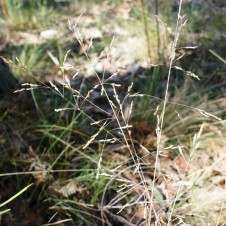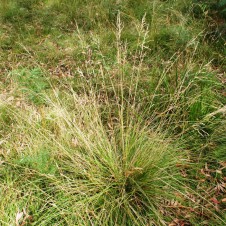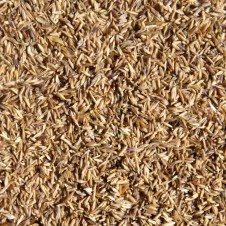General Description: A robust, tussock-forming, perennial grass with erect purplish flower stems to 80 cm tall. The leaves are mainly in a dense tuft at the base and are to 20 cm long and blue-green in colour.
Flowers and Fruit: Purplish grass flower-head, spikelets 3 to 6-flowered, on short stalks. Flowing is from October to March.
Site Preference and Tolerances: Frost hardy and drought tolerant. Grows well in most conditions but prefers dry well-drained soils and part-shade. Grows well under established trees, accepts full sun.
Life Span: Long-lived perennial grass.
Wildlife Value: This is a butterfly food plant as it provides food for caterpillars of Klug’s Xenica. Provides seed for small birds and is a favourite food of the common wombat.
Other Values and Uses: This is a grass which is winter or cool season active (C3 metabolism). Tussock-grasses are normally of low forage value; new growth is generally palatable while older growth is seldom touched. Aboriginal people used this plant for string and for basket making. Grey Tussock-grass is excellent for erosion control and is a very attractive, soft tussock for gardens and landscaping. Rejuvenate old tussocks by severely pruning and extra water, looks very effective when mass planted and is good for rockeries, mixed borders and wild-flower areas.
Germination Information: Can be propagated easily from seed and will direct seed well if weeds are controlled.



